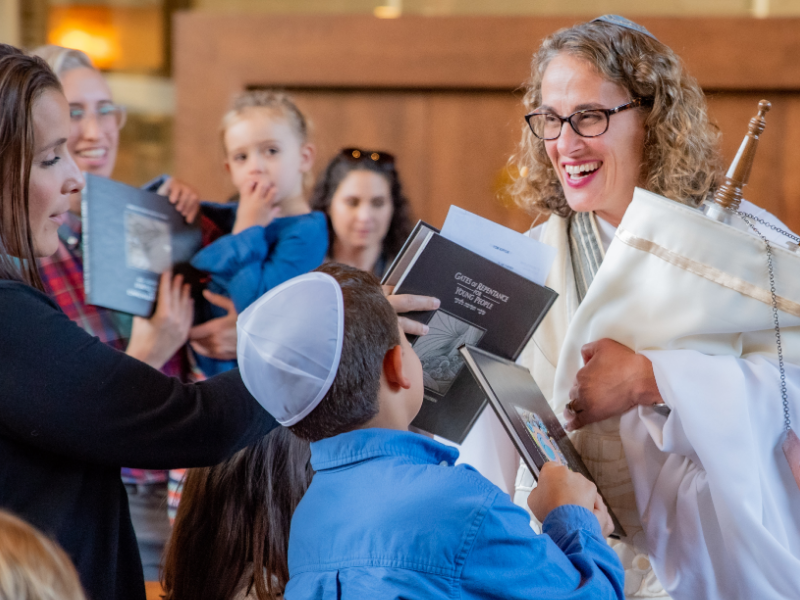Our ancient sages were obsessed with organization. As such, they categorized most everything, which is best reflected in the Talmud’s 63 tractates, which address a variety of subjects including Jewish ethics, philosophy, customs, history, lore, and much more. Nearly every topic has its place and order, with the exception of women. Women must have perplexed our dear Rabbis. We can imagine the discussion: Are they women or are they chattel? They bleed, but do not die, yet they must be impure, but they create new life, something we certainly cannot do. And while there is indeed a tractate attributed to women, Nashim, we find the ambiguity of women’s roles in the Bible and within ancient Israelite society reflected in this inability to “categorize” women as one might the Jubilee year or the subject of ketubot.
The ritual of the sotah, addressed in Parashat Naso, is an example of this ambiguity. Because of the linguistic difficulties that riddle this passage (Numbers 5:11-31), an accurate understanding of the details of the ritual and the motivation behind them may forever elude us (perhaps just like the nature of woman herself).
Adultery is considered a very grave offense in the Bible, much in the same way that incest is a sin punishable by death (see Leviticus 20:10-12). Unlike the laws of incest, which apply to both men and women (see Leviticus, chapter 18), in the case of adultery there is a fundamental difference between men and women. A married woman is forbidden to have sexual relations with all men except her husband, but a married man is free to have sexual relations with any other woman as long as she herself is single and available. Since biblical law allows men concubines as well as wives, there are no punitive measures against a married man who engages in extramarital sex. Even when the Babylonian Talmud attempts to prohibit a man from spending time in privacy with women outside his family (Kiddushin 80b-81b), such relations still remain outside the purview of sexual transgressions.
The Bible recognizes that adultery is ambiguous because the very act requires privacy, often with no witnesses or proof, but suspicion of adultery is easily aroused and quickly spread. Two possible scenarios are offered by our Torah text: the first is a case of a woman who has committed adultery and has kept it secret from her husband although he suspects it. The second is of a husband who suspects his wife of committing adultery though she is, indeed, innocent. In both cases, the common thread is the husband’s jealousy and suspicion. Parashat Naso describes the punishment by ordeal for any woman accused of adultery, a test in which divine judgment determines the guilt or innocence of the suspected wife.
The suspected woman is to be brought before the sanctuary priest. He will uncover her head and ask her to place her hands upon the altar of the meal offering. He is then to prepare a mixture of water, earth, and ashes from the meal offering. This mixture, known as the “waters of bitterness,” is meant to induce a trance. The priest will then say to her: “If no man has lain with you, if you have not gone astray while married to your husband, be immune to harm from this water of bitterness. . . . But If you have gone astray while married to your husband and have defiled yourself . . . may the Eternal make you a curse . . . as the Eternal causes your thigh to sag and your belly to distend” (Numbers 5:19-21).
The precise meaning of the expression, waters of bitterness, eludes translators, and alternative translations have been offered: “water of blessing,” “water of contention,” and “water of revelation.” As students of Torah, we ask, “Why this ritual?” One possibility is that it is not really the actual physical “test” that matters, but rather the devastating psychological reaction to the frightening and humiliating experience. A woman is brought before the priest, her hair is uncovered, and she is forced to drink a concoction that, by comparison, makes m’vushal wine1 seem alluring. The reasoning behind this “test” may have been that the psychological impact would be so great, the humiliation so severe, that a woman with a guilty conscience would reveal her guilt one way or the other. Another read is that the ambiguous nature of the ritual is intended in order to practically guarantee that a woman could prove her innocence. Perhaps the ritual afforded a way for women to clear themselves of suspicion.
One might imagine that the Torah would say that a man who has sexual relations with a married women has, in effect, taken what belongs to another man. In the case of the sotah, however, it is the woman, and not her lover, who is accused of the crime of ma’al, of “misappropriation of property.” The errant wife has taken something belonging to her husband – perhaps his honor, her fidelity, or the exclusive rights to her sexuality. Therefore, the subject of this section of Torah is not her adultery, but rather, his jealousy (and pride). After all, the ritual is enacted when a man feels suspicious. Rabbi Sarra Levine2 points out that this societal problem of men’s jealousy is marked onto the bodies of women, the true abhorrence here, much in the way that men’s legislation of a woman’s body is equally disturbing in today’s public and legal arena (The Women’s Torah Commentary). Perhaps the ambiguity in the text is the Torah’s own way of withholding support for the husband’s lack of control of his emotions or even condemning the misplaced blame. The uncertainty of the text just may be the Torah’s way of saying, “Men, pull yourselves together and stop blaming women for your shortcomings!” We can even imagine the tone she might take when offering such a tochechah (constructive criticism).
- M’vushal wine is wine that has been treated so that it is kosher to drink no matter who handles it.
- “Inscribing Jealousy on the Bodies of Women,” Rabbi Sarra Levine in Elyse Goldstein, ed., The Women’s Torah Commentary: New Insights from Women Rabbis on the 54 Weekly Torah Portions (Woodstock, VT: Jewish Lights Publishing, 2008), p. 267
Rabbi Laurie Rice is co-senior rabbi at Congregation Micah in Nashville, Tennessee, where she shares the pulpit with her husband, Rabbi Philip "Flip" Rice.
Whenever I read about the sotah I cannot help but think about the scene of the witch trial in Monty Python and the Holy Grail. The scene makes a mockery of the peasants calling for the woman to be burned as a witch (despite no real evidence) and the knight who is responsible for administering what passes for a judicial verdict in that context.
While I would like to think that the ritual in the Temple was more civilized and orderly than the one presented in the movie, I wonder how far apart they really are from one another. It seems clear that the ritual of sotah and the trial of witches were both ways by which men sought to control women in their society. As we read the account of the sotah it is clear that the men are the active participants in this ritual, with everything done to the woman by her husband and the priest.
Thankfully, we no longer have witch trials and we no longer practice the ritual of sotah, but we might wonder about other ways in which our overwhelmingly male-dominated society continues to seek to control women. Over the last year, Sheryl Sandberg's book, Lean In, has gotten a lot of media attention, and has highlighted many of the challenges for women seeking to combine a career and a family life. What comes across loud and clear through the book is that men and women are judged differently, held to different standards, and that society's generally accepted career paths favor men significantly over women. As she writes, "the promise of equality is not the same as true equality."1
Despite all of the progress toward equality in modern society, we can still see ways in which men seek to control women, especially in the professional arena. Women with children have to choose whether to be a "stay at home mom" or a "working mother"; there is no equivalent male language, because no similar dichotomy is presented to men.
In the case of sotah, as Rabbi Laurie Rice makes clear, it is the husband's suspicion and jealousy that lead to the ritual's enactment. In this way, it is a reminder for us men that the quest for true equality is not a women's issue; it is an issue for all of us who are concerned with building a fair and equal society. As we read about sotah it is a reminder of how far we have come, but also how far we have still to go. I want to be a working father in partnership with my wife as we build our family and careers together.
- Sheryl Sandberg, Lean In: Women, Work, and the Will to Lead, (New York: Knopf, 2013), p. 7
Rabbi Danny Burkeman is a rabbi at the Community Synagogue in Port Washington, New York.
Naso, Numbers 4:21-7:89
The Torah: A Modern Commentary, pp. 1,043-1,075; Revised Edition, pp. 921-945;
The Torah: A Women's Commentary, pp. 815-842
Explore Jewish Life and Get Inspired
Subscribe for Emails

